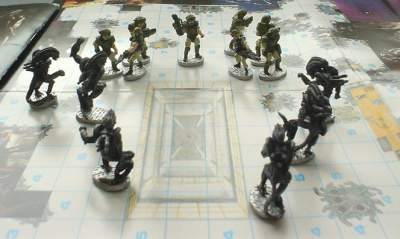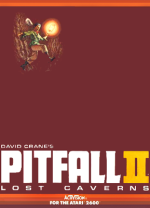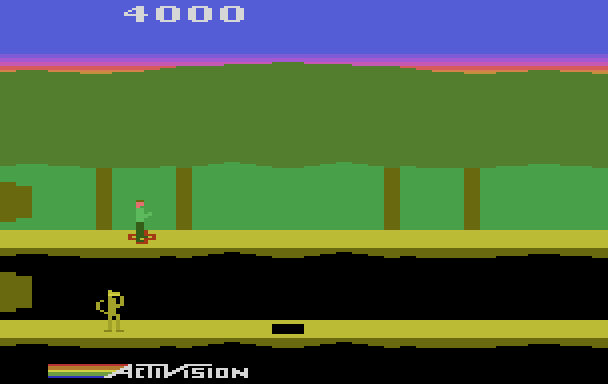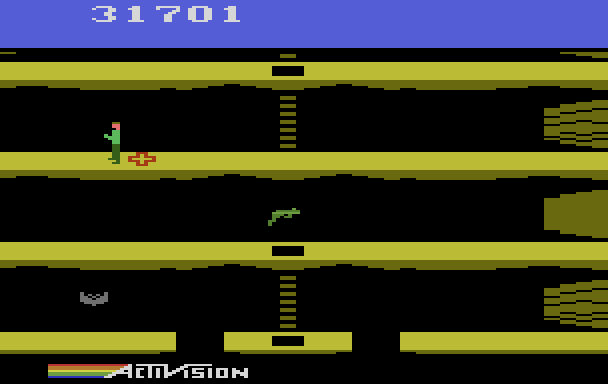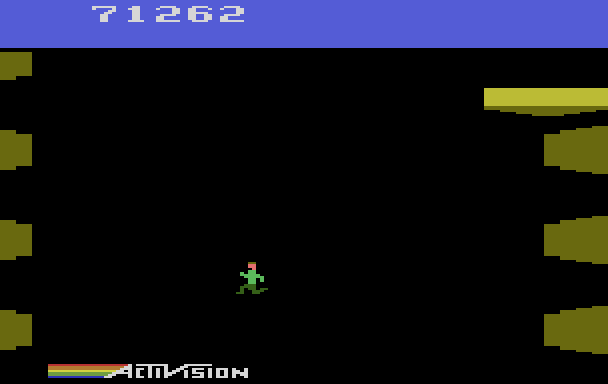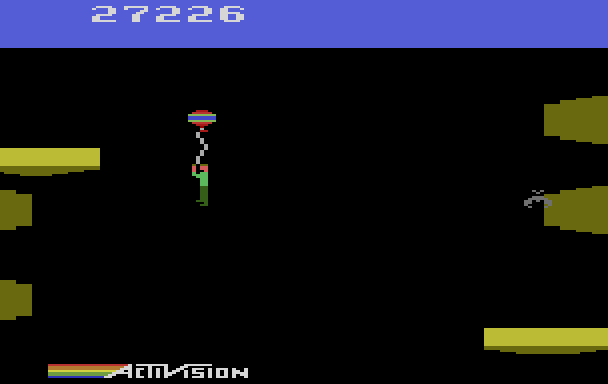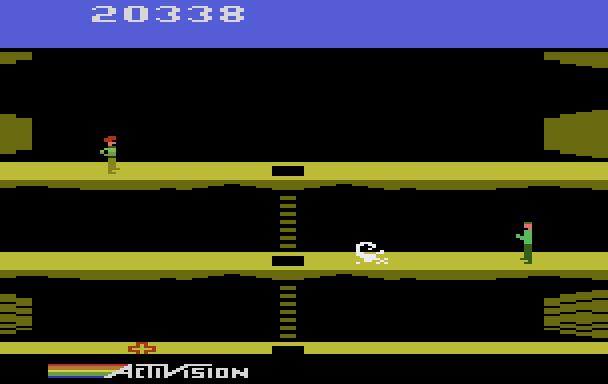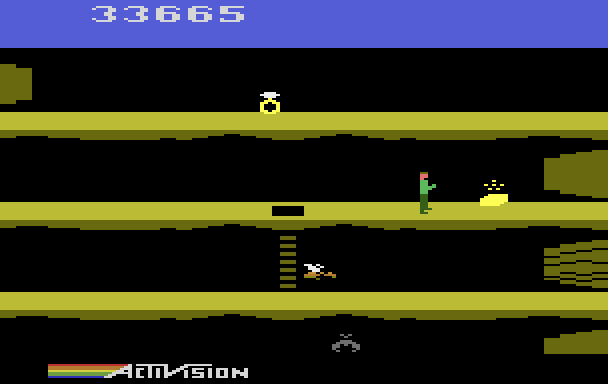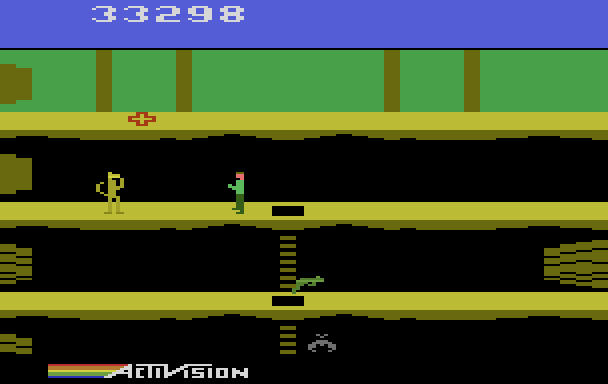Best Films of 2006
Top 10 lists are intensely personal affairs. When it comes to movies (or art in general), you have to walk the narrow line between subjective and objective evaluations, and I inevitably end up with a list that says more about me than the movies I selected. James Berardinelli says it well:
I would be surprised if anyone else (critic or otherwise) has an identical Top 10 list to mine. But therein lies the enjoyment of examining individual Top 10 lists: they provide insight into the mindset of the one who has assembled them. It doesn’t matter whether one agrees with their choices or not; that’s irrelevant. It’s about learning something about a person through the movies they like. I don’t like “group” lists. To me, they are valueless – a generic popularity contest that reveals nothing.
I actually kinda like “group” lists, but I digress. The point is that these are generally movies that I like or otherwise moved me. Context matters. Some films are on the list because I had low expectations that were exceeded beyond imagination, and some are there because I had a great theater-going experience (apparently a rarity in this day and age). As I’ve done in years past, my top 10 is listed in a roughly reverse order, with the best last.
Top 10 Movies of 2006
* In roughly reverse order
- Thank You for Smoking: The bottom two slots in the top 10 were very hard to fill, as there were essentially 4 films (with 4 very different styles) I wanted to include. I went into this film expecting a bland, heavy-handed activism and found myself astounded. This film somehow manages to make a tobacco lobbyist a sympathetic character without excusing the tobacco industry. That said, big tobacco really isn’t the target of the film – it’s more about media spin and the power of argument than anything else. Aaron Eckhart turns in a great performance as said lobbyist, and I’m not sure anyone else could have pulled this off. It’s a humorous film that displays an almost libertarian attitude towards the power of debate. It has its flaws, but it won me over.
- The Descent: This was the best horror film of the year, and one of the most enjoyable moviegoing experiences as well. Solid direction and acting, brilliant cinematography, and well executed scare sequences contribute to a tension filled film.
More Info: [IMDB] [Amazon] [Full Review]
- Clerks II: What can I say, I’m just a sucker for Kevin Smith’s brand of raunchy pop-culture laden humor. As usual, he mixes the comedy into a more conventional dramatic story, and in this case, he’s more than successful. Borat was funny, but Clerks II was both funny and moving.
- Casino Royale: I’ve never been all that enamored with James Bond, but this reboot of the franchise was a revelation – quite possibly the most enjoyable movie going experience and pleasant surprise of the year for me. The film has its flaws, but it overcomes them with its action-packed charm.
More Info: [IMDB] [Amazon] [Winner of 3 Kaedrin Movie Awards]
- Inside Man: I’m not normally a fan of Spike Lee “Joints,” but this film had me on the edge of my seat. It’s a heist film, though it does make use of a historical implausibility and some macguffins. There are hints of Lee’s more typical material, but it’s done with a surprisingly deft touch (none of the heavy-handedness that I expected from him). Not the best heist film of all time, but a solid and surprisingly entertaining film.
- Lady Vengeance: The third and final film in Chan-wook Park’s “Vengeance Trilogy,” this film has a reputation for being the worst of the three films. I, on the other hand, think it might be my favorite, for two reasons. First, it’s story is far more believable than the other two, and second, this film actually ends with a touch of hope. The film is perhaps not as twisted as it’s sister films, but it’s still pretty messed up. The vengeance isn’t as layered as the other films, but that only serves to differentiate the films. I enjoyed it a lot.
- Hard Candy: It is perhaps an uncomfortable film to watch (especially for the guys), but it is also quite a good film. It deals with pedophilia and features only two characters and one major setting. Given these traits, it’s amazing that the film manages to retain a lot of tension and challenge viewers with its shifting sympathies. Excellent performances by both leads, though Ellen Page’s performance is particularly noteworthy.
More Info: [IMDB] [Amazon] [Capsule Review]
- Brick: Sam Spade goes to high school in this remarkable high-concept mixture of genres. Writer/director Rian Johnson nails the tone of the film, creating a stylized world filed with mixtures of the old and new. Perhaps not for everyone, I thoroughly enjoyed this.
More Info: [IMDB] [Amazon] [Capsule Review]
- The Departed: Scorcese returns to form with this violent, stylized remake of Infernal Affairs. Excellent directing, acting, music, and an engaging story that retains the original’s feel, while adding some flourishes of it’s own.
- United 93: A movie about 9/11 could have come off as horribly exploitive, but director Paul Greengrass managed to create an amazingly emotional experience without being manipulative. Unquestionably the most emotional experience I had at the movies this year (if not ever), for what I assume are obvious reasons.
Honorable Mention
As I’ve already mentioned above, the first two of the Honorable Mentions listed below could probably be interchangeable with the number 9 or 10 in the top 10. Part of why it was so hard to select was that these four films are just so different from one another. Indeed, the last two has changed back and forth several times (I started this list a while ago).
-
Pan’s Labyrinth: This could easily have been 9 or 10 on my list. Guillermo del Toro’s visually stunning tale of a young girl who seeks to escape her unpleasant reality with a fantasy world which ends up being… not much of an escape. It’s a great film, if a little bit of a downer. It actually ends on a note that is simultaneously tragic and triumphant, which is strange but impressive. Ultimately, I decided against it because it just didn’t surprise and excite me the way the other films on the list did.
-
The Matador: Pierce Brosnan plays against character (the anti-Bond) in this quirky film about a hit man (Brosnan) and his unlikely friendship with everyman/businessman Greg Kinnear. Dark humor, a sharp script and a progression that seems strange at first, but makes more sense as the film goes on. Again, this is interchangeable with the 9 or 10 picks above, and it’s probably more of a crowd-pleaser than you’d expect.
-
The Proposition: An Australian take on the western, this is a brutal film that is quite original, but also lacking something. Showcasing the grimy desolation of the untamed outback, this film also features one of the best opening scenes of the year (a disorienting gunfight that thrusts you into the story). Ultimately, it doesn’t work as well as it might seem, but it’s an interesting film.
-
Apocalypto: Mel Gibson’s offscreen shenanigans aside, this is actually a decent action/suspense film with one of the better chase sequences of the year. I didn’t think I’d be all that enthralled with the setting of the film, but Gibson managed to keep things interesting enough. A well made film that was nowhere near the disaster I thought it would be (seriously, who watched that trailer and thought it would be good?)
-
The Fountain: Darren Aronofsky’s trippy exploration of love and mortality is best described by the phrase “Interesting Failure.” It is undoubtedly the most gorgeous movie of the year, and all of the technical aspects of the film (direction, acting, cinematography, etc…) are outstanding. Unfortunately, it doesn’t add up to a whole lot, though there are deeper themes at work in the story that I admit I haven’t taken the time to parse (repeated viewings may fix that).
More Info: [IMDB] [Amazon] [Full Review]
-
Mission Impossible III: Tom Cruise’s offscreen shenanigans aside (do we see a trend here?), MI III was actually one of the more enjoyable popcorn flicks of last summer. I think a large portion of the credit goes to Philip Seymour Hoffman’s small role as the villain. It’s probably the most enjoyable in the series, though I still don’t mind the first film.
-
The Illusionist: One of two good turn-of-the-century magician films, this movie was enjoyable. Writer/director Neil Burger makes some interesting stylistic choices and manages to coax a good performance out of Jessica Biel of all people. Ed Norton and Paul Giamatti are also excellent, of course.
-
The Prestige: The other (and seemingly more popular) turn-of-the-century magician film features an excellent cast and an intriguing story (even though I think they cheated a bit). Director Christopher Nolan is not as stylish as Burger, but he has crafted a good film.
-
Slither: Underrated and fun film in the cheesy horror/sci-fi/comedy tradition of Tremors. It’s not the best of its kind, but it was quite enjoyable and well done.
Worth Commenting
These are all decent films, but for some reason, I don’t find them as engaging as everyone else.
-
Children of Men: If there is a film that has less faith in humanity, I can’t think of one. This is one of the most depressing films of the year, and a few minutes of what I thought was “pretend hope” towards the end of the movie wasn’t enough to redeem it in my eyes. It’s well made, and there are some harrowing action sequences and long shots that are quite impressive, but it’s fundamentally pessimistic – a trait I just can’t stand in a movie.
-
Little Miss Sunshine: A fine film, but I must admit being a little baffled by the popular response to this movie. It’s not your typical Hollywood fare, which might be part of it, but it is emphatically your typical independent movie fare. I liked it, but didn’t love it.
-
V for Vendetta: A decent film that I found to be very sloppy and not all that engaging. The story seemed muddled and unecessarily repetitive and manipulative, and the action sequences were edited to death. It wasn’t a bad movie, but it wasn’t that great either.
Should have seen:
- Volver
- <a href="Stranger Than Fiction“>Stranger Than Fiction
- <a href="Tsotsi“>Tsotsi
- Half Nelson
- The Science of Sleep
- The Last King of Scotland
- Fast Food Nation
- The Break-Up
Allrighty then! That about wraps it up for the 2006 movie awards, and it’s about time. That said, I do have another idea for a post related to my top 10. Don’t worry, it’s not all about the movies (it’s more of a meta-top-10 type post, whatever that means).
In any case, comments are welcome. Feel free to express your outrage or approval in the comments.
